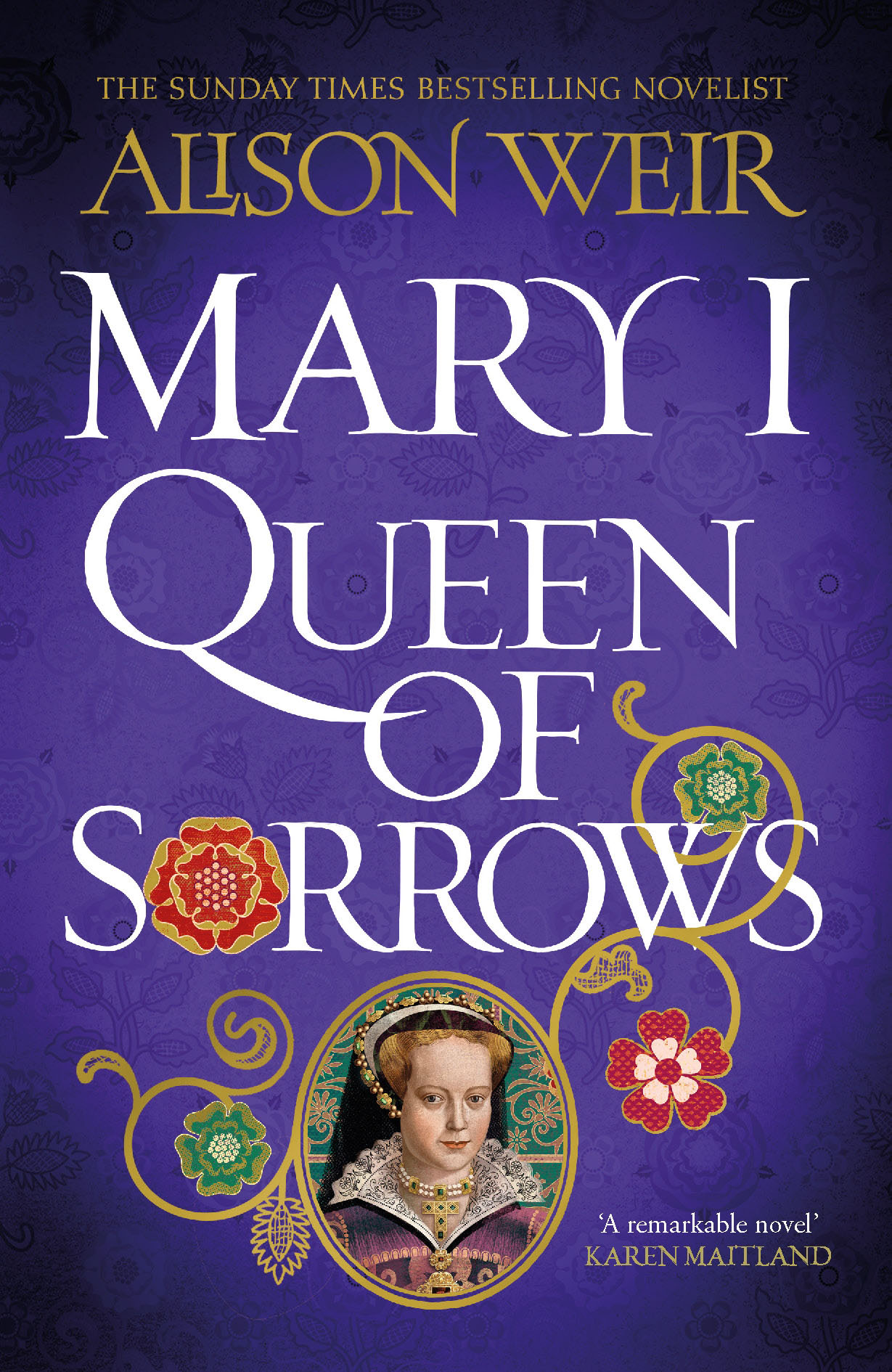Dear friends. For those of us who are avowed Tudorphiles, a new book from Alison Weir about this dynasty is always eagerly awaited. Alison is the biggest-selling female historian in the UK.
Her latest novel is "Mary I: Queen of Sorrows." Today's post shines a spotlight on the book, including a QA with the author.
SYNOPSIS: Mary I: Queen of Sorrows
The adored only child of Henry VIII and his Queen, Katherine of Aragon, Princess Mary was raised in the golden splendour of her father's court. But the King wants a son and heir.
With her parents' marriage, and England, in crisis, Mary's perfect world begins to fall apart. Exiled from the court and her beloved mother, she seeks solace in her faith, praying for her father to bring her home. But when the King does promise to restore her to favour, his love comes with a condition.
The choice Mary faces will haunt her for years to come - in her allegiances, her marriage and her own fight for the crown. Can she become the queen she was born to be?
My Review
Mary I is a difficult queen to love. Is it time to rehabilitate her reputation?
Alison Weir builds a sympathetic picture of the young Mary. At times forbidden to see her mother and removed from the succession, Mary developed health problems that would affect her all her life. Weir speculated that she probably had crushes on Chapuys, the Imperial ambassador, and Simon Renard, an Imperial advisor.
At times Mary’s life was in danger but she was indecisive and didn’t take a lifeline thrown by the Imperial Emperor who had sent people to England to try to rescue her.
Fortunately she grasped the opportunity to fight for her crown and managed to summon enough support to overthrow Lady Jane Grey who had been put on the throne by plotters. The turn coats made up most of her advisors, which was difficult.
Mary was finally married at the age of 37 to the handsome heir to the Emperor, Philip. She became pregnant but was still confined long after the pregnancy had gone full term. After this she rarely saw Philip who was spending time in Europe with his armies.
Mary had to work with many of the men who had plotted against her. She occasionally showed compassion for her subjects. But she was determined to restore England to the Catholicism, and Papal supremacy, that preceded her father Henry VIII. Many advised her to be attuned to changing times, including her husband, but she refused to take their advice. Her reign saw the execution of between 300 – 600 heretics, earning her the name “Bloody Mary.”
INTERVIEW WITH ALISON WEIR
1. How much research did it take to write the book?
The research for this book was done over a period of several decades, as Mary I features in several of my books, both fiction and non-fiction. I researched her in depth for my non-fiction book, Children of England: The Heirs of Henry VIII (1996), which underpins the narrative of the new novel. In recent years, I've become aware of a shift in opinion on Mary, as some historians have revised traditional perceptions of her, so I did research on that before embarking on the novel.
2. Is there anything new to discover about the Tudors?
Yes, new evidence does come to light from time to time - such as the recently discovered batch of letters written by Mary, Queen of Scots - but sometimes we gain new perspectives from looking at contemporary sources from different angles, or from finding out more about the context in which they were written. A lot can turn on language, because the meanings of words can change over time, so it's important to look on the etymology of key words in documents. For example, the word 'rape' now means forced intercourse, but in Tudor times it also meant 'abduction', which might make us pause to give more consideration to the circumstances. Occasionally, the same passages are quoted again and again, yet the rest of a document is overlooked, and it might contain valuable information that throws more light on events.
3. You mention recent attempts to rehabilitate Mary's reputation. How do you now perceive Mary?
I've looked at the debate from both sides, but the contemporary sources are pretty clear. I have enormous sympathy for Mary as a human being, but I don't admire her as a queen. I think she had poor judgement and that she could have avoided the worst crises of her reign if she had been less single-minded and dogmatic.
4. What is your next project?
I'm not allowed to say, as it hasn't been announced yet, but I can let on that I'm working on the first of three newly-commissioned novels, and that I'm very much enjoying being back in the sixteenth century!
About the Author
Dr Alison Weir is the biggest-selling female historian (and the fifth best-selling historian) in the United Kingdom since records began in 1997. She has published thirty-two titles and sold more than 3 million books - over a million in the UK and 2.2 million in the USA. She is now working on two concurrent series of books: the Tudor Rose trilogy of novels about Elizabeth of York, Henry VIII and Mary I, and England's Medieval Queens, a quartet of historical works of non-fiction.
DON'T MISS OUR REGULAR POSTS ON BOOKS
Subscribe for 1 email a week from Is This Mutton to find out what posts on books, fashion and beauty you may have missed. Find us on Facebook, Instagram, X



Sounds interesting. I am starting on a Ken Follett tome which has over a thousand pages so won’t be reading that yet!
ReplyDelete